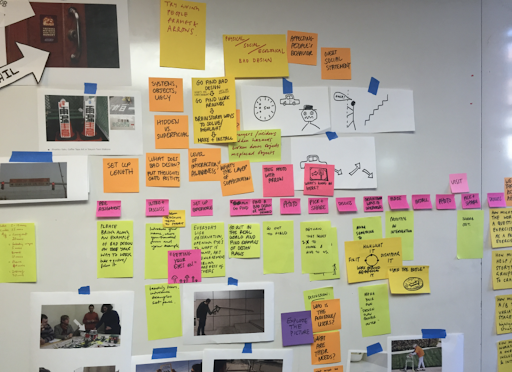Classes in the Stanford d.school, a group dedicated to designing creative methods to make change, shouldered the challenge of reimagining online learning amid the COVID-19 pandemic. While facing Zoom-related difficulties, students and faculty in the d.school spent the fall quarter thinking about and designing innovative solutions. They focused on adapting to the new venues of their own classes, as well as overcoming the challenges of online interactions for the broader Stanford community.
Along with other hands-on fields such as art studio and lab classes, courses in the d.school struggled to find digital alternatives to necessary resources. In particular, students found it difficult to create prototypes of their designs, typically a central component of design-oriented courses.
Calista Baldovino Reyes ’22, who took DESINST 232: “Reimagining Campus Life for Today’s World” in the fall, said that the hardest part of online learning was the process of prototyping, especially since students in the d.school are expected to be “more hands on,” physically testing their prototypes.
Creating prototypes and collaborating with other students were also made harder by the lack of physical interactions during classes, something that many felt was crucial to their learning. Lina Fowler ’22 took ME 110: “Design Sketching” and ME 101: “Visual Thinking,” design-centric classes outside of the d.school.
“There’s something about being physically present with your team, whether it’s ideating on a whiteboard or troubleshooting mechanisms, that Zoom doesn’t fully emulate,” Fowler said. “It’s also technically challenging to present mechanical elements in detail live over Zoom.”
As another student in DESINST 232, Maya Czeneszew ’23 said she also missed the “side conversations” where she could bounce ideas off of peers.
“In the online space everything just feels very structured and streamlined,” she said. In response to these challenges, she said her class has been exploring ways to “recreate spontaneity” over Zoom.
DESINST 232 lecturer Glenn Fajardo said he has focused on creating new ways to overcome the barriers associated with a lack of physical presence among the Stanford community. According to Fajardo, his class emphasized the central question of how students and faculty could “design for casual interaction, for serendipity, for the human connection that leads to lifelong friends and connections.”
He said that online learning should not be necessarily posited as a “bad” alternative to the “good” format of in-person learning. Online classes offer “limitless space” where “we can be together anywhere at any time,” he said.
“There’s all these different avenues that are opened up to us,” he added.
Reyes, a student in Fajardo’s class, said that she agreed online learning created new opportunities for communication and growth.
“We’ve been able to better understand our situation and how we can evolve along with the changing situations that we are put in,” Reyes said. “It’s just that openness to thinking about new ways in which we can continue to engage in similar aspects as before.”
To combat Zoom fatigue, Fajardo said that the creative solution he implemented for his class was to structure each lecture with “a narrative arc” after noticing that some people were using Netflix to relax. He said he designed his classes like a story, complete with suspense and students acting as protagonists in their own education.
In one exercise, students were asked to take 30 pictures of a day in their life and then engage in a “no-words conversation,” where they interact with their classmates entirely through photos and observe how human connections occur in the digital space.
Through these methods, Fajardo hoped to create a “distributed space” in his class, a combination of physical and virtual spaces that considered “how we can be together in a way that’s not just about what happens on the screen, but what happens on the screen plus what’s going on around each one of us.”
The d.school instructors’ efforts to creatively adapt their classes to an online format were appreciated by students, who found these adaptations conducive to their learning. Ecy Femi King ’23, another student in DESINST 232, said that the faculty did an “excellent job,” and that the class had helped her develop a “framework of thinking differently, thinking creatively, and seeing what you can do in a situation.”
Czeneszew said that in some cases, students participated more online as a result of both the instructors’ successful attempts to create productive and meaningful classes and the students’ own efforts to make up for their missing physical presences.
“It actually makes you be even more engaged because you’re very aware of the fact that there is this big in-person component missing, so you really try to compensate for it,” she said. “It’s really inspiring to see how the instructors from the d.school took this challenge and adapted to it.”
Contact Jessica Zhu at jesszhu ‘at’ stanford.edu and Xinyi Wang at xinyiwang1 ‘at’ stanford.edu.
